
Do you have a question about the Samsung AR09HCF Series and is the answer not in the manual?
| Cooling Capacity | 9000 BTU/h |
|---|---|
| Energy Efficiency Class Cooling | A |
| Energy Efficiency Rating | A |
| Refrigerant | R410A |
| Outdoor Noise Level | 48 dB(A) |
| Power Supply | 220-240V, 50Hz |
| Energy Efficiency Ratio (EER) | 3.21 |
Cools room quickly then adjusts fan for comfort.
Provides the strongest cooling air for rapid temperature reduction.
Indirectly spreads cool air for a comfortable experience.
Saves energy by limiting temperature range when home alone.
Defines WARNING and CAUTION symbols and their meanings for safe operation.
Critical safety guidelines for proper and safe installation of the air conditioner.
Specifies temperature and humidity ranges for efficient air conditioner operation.
Details internal protections and checks for maintaining the unit.
Explains the installer's check for proper installation via the Smart Install function.
Illustrates and labels the primary parts of the indoor air conditioner unit.
Describes the indicators and their functions on the indoor unit display.
Explains the function of each button on the air conditioner's remote control.
Describes the Auto, Cool, Dry, Fan, and Heat modes of the air conditioner.
How to adjust the vertical airflow blades for desired air direction.
How to adjust the horizontal airflow blades for desired air direction.
Step-by-step guide to setting the timer for the unit to turn on automatically.
Instructions for setting both On and Off timers simultaneously.
How to activate and configure the Good'Sleep mode for comfortable sleeping.
Enables rapid cooling followed by automatic transition to Dry mode.
Provides mild cooling by indirectly directing airflow.
Reduces energy consumption by adjusting settings for a single user.
Minimizes indoor unit moisture for cleaner air.
Option to mute or enable the beep sound from the indoor unit.
Instructions for safely cleaning the indoor unit and its display.
Guide to cleaning the outdoor unit's heat exchanger for optimal performance.
Solutions for the unit not working or problems with temperature adjustment.
Troubleshooting steps for airflow issues and defrost mode behavior.
Interpreting error codes and understanding normal operational noise.
Key steps and considerations for installing the air conditioner unit.
Guidelines for safe and compliant electrical connections and wiring.
Criteria for selecting the optimal location for the indoor unit.
Required spacing for a single outdoor unit installation.
Details the accessories included for the indoor unit installation.
Guidance on routing refrigerant pipes and cables during installation.
Steps to remove the screws securing the indoor unit's cover panel.
Details on power and interconnection cable types and specifications.
Guidelines for performing safe and compliant electrical wiring.
How to connect the refrigerant pipes to the indoor unit.
Techniques for cutting and flaring refrigerant pipes correctly.
Details on positioning and connecting the indoor drain hose.
Installing the drain plug and connecting the hose to the outdoor unit.
Detailed steps for using the vacuum pump to evacuate the system.
Guidelines for adding refrigerant based on pipe length.
Techniques for detecting leaks using inert gas and leak detectors.
Procedure to safely collect refrigerant before unit removal or disposal.
Instructions for securely mounting the indoor unit onto its installation plate.
Steps for leveling and securing the outdoor unit, including wind protection.
Steps to start the Smart Install mode using the remote controller.
Steps for conducting a trial run after installation to verify functionality.
Procedure to safely remove refrigerant when decommissioning the unit.
List of items required for extending power cables.
Step-by-step guide for making secure electrical connections for extended cables.


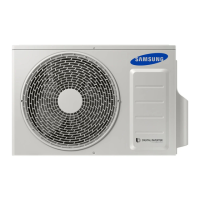

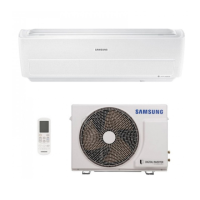
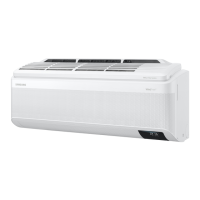
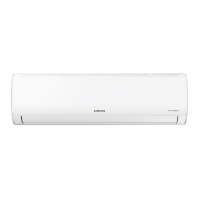
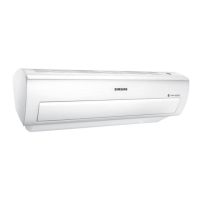
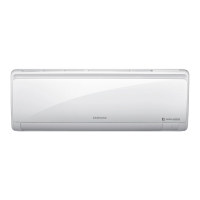

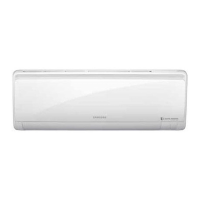
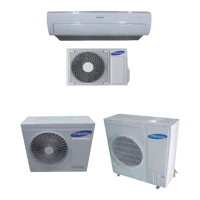
